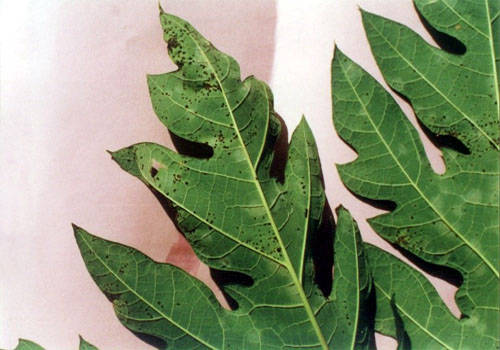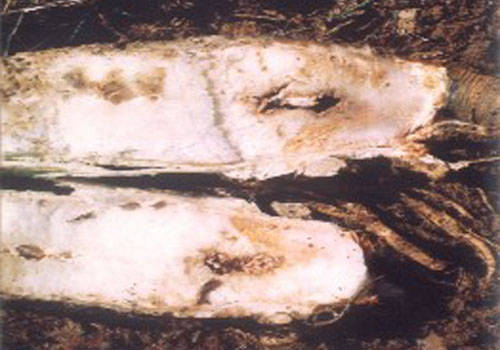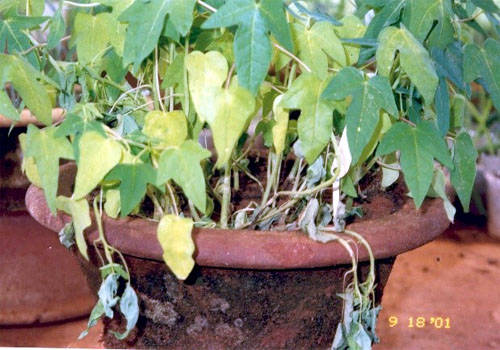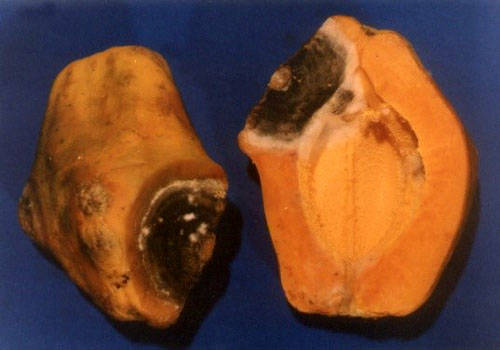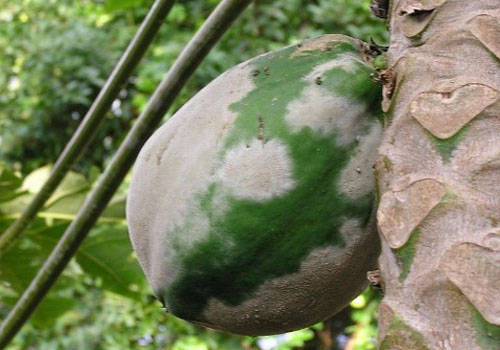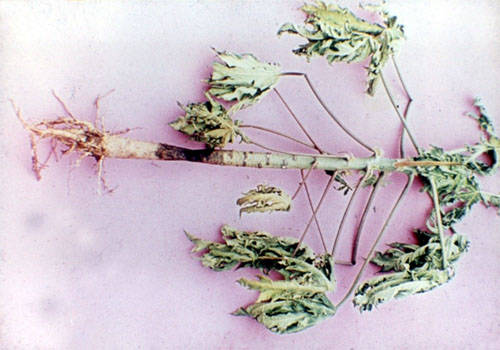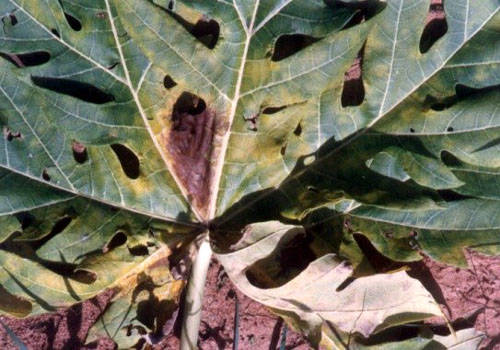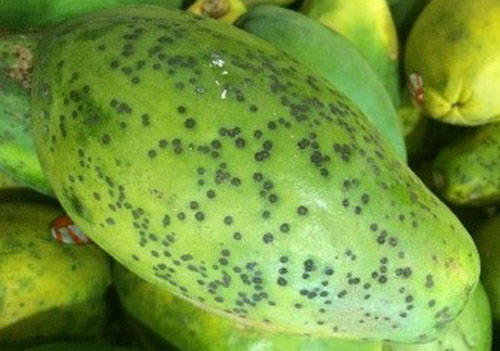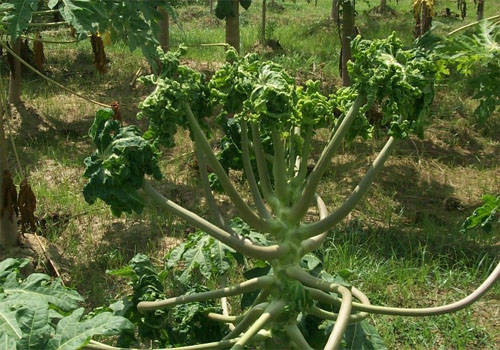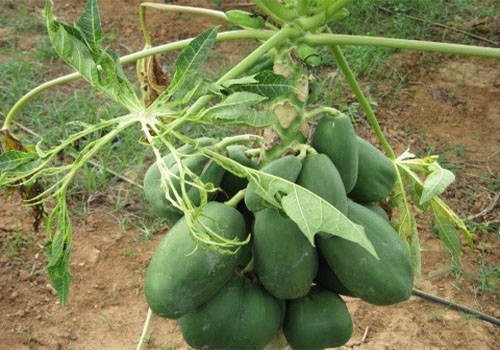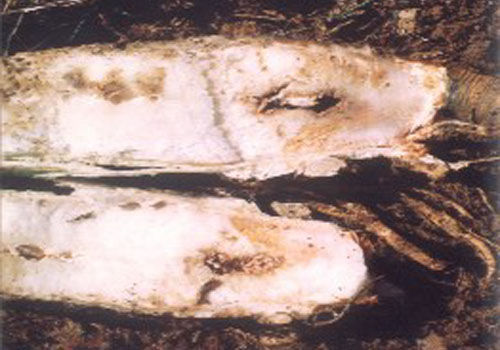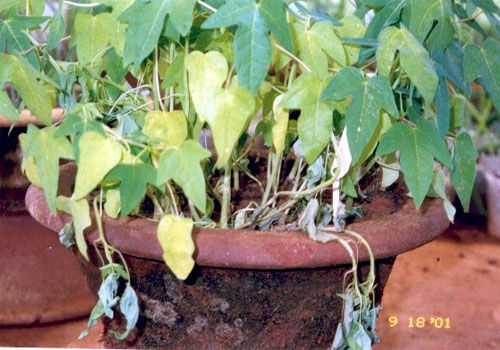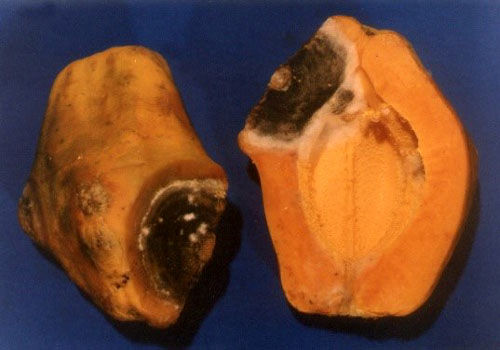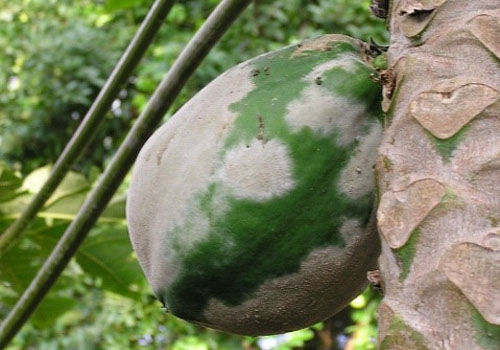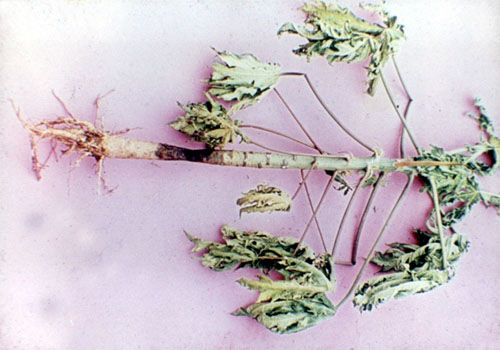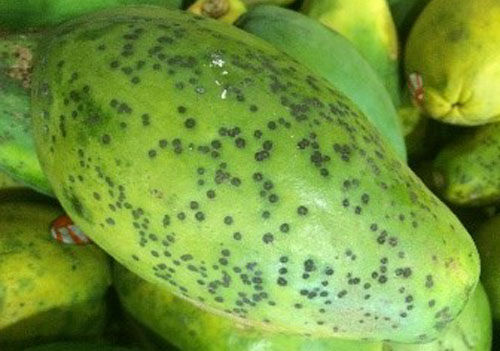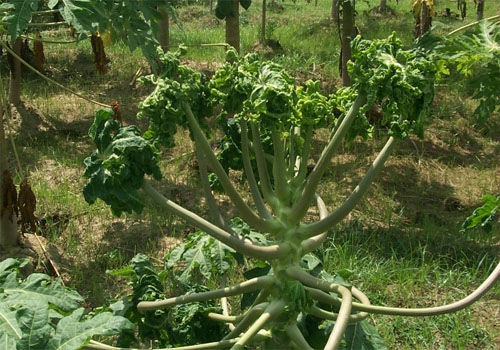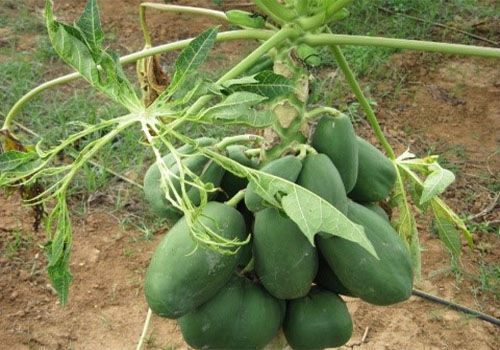PAPAYA RING SPOT DISEASE
(Papaya ring spot virus)
Papaya ring spot disease is also known as papaya mosaic, papaya distortion mosaic, mild mosaic, papaya ring spot, papaya leaf reduction, thin leaf and distortion as all the above symptoms are caused due to Papaya ring spot virus. The typical mosaic caused by potexvirus so far not found in India.
Symptoms: PRSV-P strain naturally infects papaya and cucurbits. Plants of all ages are susceptible and symptoms are generally more severe during cooler weather. The disease derives its name from the characteristic dark green sunken rings that develop on fruit of affected plants. These rings often persist as dark orange to brown markings as the fruit matures. Dark green, water-soaked streaks develop on petioles and stems. Mottle and mosaic patterns of varying severity develop on leaves that often have a ruffled appearance . One or more leaf lobes may become stunted and fruit set is markedly reduced or absent. Fruit from affected plants have poor flavor, a leathery appearance and are predisposed to fungal fruit rots.
Cause and Spread: The virus is flexuous particle of 680-760 X12nm and virus particles consists of positive sense monopartite ssRNA. PRSV is a potyvirus belonging to Potyviridae. PRSV is transmitted by several aphid species of which the following are important Aphis gossypii Glover, A. craccivora Koch, Rhopalosiphum maidis (Fitch) and Myzus persicae (Sulzer) all of which transmit the virus in a non-persistent manner. Papaya and Pumpkin are the major primary and secondary source of inoculums while rapid secondary spread can occur very fast leading to whole plantations getting totally infected. This would happen in plantations where young plants are in the vicinity of infected plants where populations of winged aphids are high. Transmission of PRSV-P is almost entirely due to transitory aphid populations, as papaya is not a preferred host for aphids and so colonies are very rarely found on plants.
Management practices: Growing of boarder crops two rows of Sesbania or castor 15 days before planting of papaya. Rouging and removal of early infected plants as when noticed. Several cultural practices have proven useful in slowing epidemics and reducing crop damage. Establishing plantations with seedling plants free of PRSV-P is essential, and new planting should be situated as far as possible from affected plantations. Plantations can be surrounded by non host crops or inter planted with other tree crops. Growing tolerant or resistant varieties is the best option. Genetically engineered resistance against PRSV has been achieved in Hawaii using Kapoho, Sunup and Rainbow cultivars. However, in India so far PRSV resistant cultivar is not available at present.
